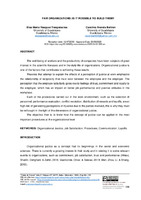| dc.rights.license | Licencia de Creative Commons Reconocimiento-NoComercial-CompartirIgual 4.0 Internacional (CC BY-NC-SA 4.0) | |
| dc.creator | Vasquez Trespalacios, Elsa Maria | |
| dc.creator | Aranda Beltran, Carolina | |
| dc.date.accessioned | 2020-07-13T18:46:42Z | |
| dc.date.available | 2020-07-13T18:46:42Z | |
| dc.date.issued | 2020-07-01 | |
| dc.identifier.citation | Vasquez Trespalacios, E. M., y Aranda Beltran, C. (2020). Fair organizations : is it possible to build them?. Visión de Futuro, Revista Científica. Posadas (Misiones): UNaM. FCE. PPA; 24(2), 184-193. | |
| dc.identifier.issn | 1668-8708 | |
| dc.identifier.other | VF-054 | |
| dc.identifier.uri | https://hdl.handle.net/20.500.12219/2530 | |
| dc.identifier.uri | https://doi.org/10.36995/j.visiondefuturo.2020.24.02.005.en | |
| dc.identifier.uri | https://visiondefuturo.fce.unam.edu.ar/index.php/visiondefuturo/article/view/425/300 | |
| dc.description | Fil: Vasquez Trespalacios, Elsa Maria. University of Guadalajara; Mexico. | en |
| dc.description | Fil: Aranda Beltran, Carolina. University of Guadalajara; Mexico. | en |
| dc.description.abstract | The well-being of workers and the productivity of companies have been subjects of great interest in the scientific literature and in the daily life of organizations. Organizational justice is one of the factors that contributes to achieving these results.
Theories that attempt to explain the effects of a perception of justice at work emphasize the relationship of reciprocity that must exist between the employee and the employer. The perception that the employer acts fairly gives rise to feelings of trust, commitment and loyalty to the employer, which has an impact on better job performance and positive attitudes in the workplace.
Each of the procedures carried out in the work environment, such as the selection of personnel, performance evaluation, conflict resolution, distribution of rewards and layoffs, are at high risk of generating perceptions of injustice due to the parties involved, this is why they must be rethought in the light of the dimensions of organizational justice.
The objective then is to know how the concept of justice can be applied in the most important procedures at the organizational level. | en |
| dc.format | application/pdf | |
| dc.language.iso | eng | en |
| dc.publisher | Universidad Nacional de Misiones. Facultad de Ciencias Económicas. Programa de Posgrado en Administración | es_AR |
| dc.rights.uri | http://creativecommons.org/licenses/by-nc-sa/4.0/ | |
| dc.source | Visión de Futuro (Misiones), 7-2020; 24(2): pp. 184-193 https://visiondefuturo.fce.unam.edu.ar/index.php/visiondefuturo/index | |
| dc.subject | Organizational justice | en |
| dc.subject | Job satisfaction | en |
| dc.subject | Procedures | en |
| dc.subject | Communication | en |
| dc.subject | Layoffs | en |
| dc.title | Fair organizations : is it possible to build them? | en |
| dc.type | info:eu-repo/semantics/article | |
| dc.type | info:ar-repo/semantics/artículo | |
| dc.type | info:eu-repo/semantics/publishedVersion | |




